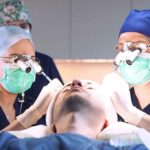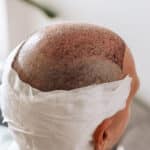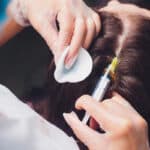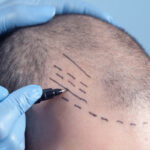Hair transplant is a procedure increasingly chosen by physically active people – both professional athletes and enthusiasts of strength training, running, or combat sports. More and more patients combine taking care of their physical fitness with concern for their appearance. Thick, well-groomed hair is not only an element of aesthetics but also influences self-confidence. Although hair transplantation is now performed in a way that does not interfere with overall health and does not require long hospitalization, the recovery process requires a responsible approach, especially when planning a return to intensive physical activity.
What happens to the body after a transplant?
Regardless of whether the procedure was performed using the FUE method or another technique, hair transplantation involves intervention in the scalp. Harvested hair follicles are precisely implanted into areas affected by alopecia, and both the donor and recipient sites need time to heal. During the first few days, micro-damage to the epidermis, scabs, slight redness, and a feeling of tightness appear. These symptoms are completely natural but require proper care and avoiding any factors that could interfere with the healing process. One of the most important of these factors is physical exertion.
FUE hair transplant at PT CLINIC
Why can sports harm the results of the procedure?
Athletes are well aware of the effects of exercise on the body – increased body temperature, elevated blood pressure, intense sweating, and faster circulation. While all this benefits health, immediately after a hair transplant it can be detrimental. The scalp is very delicate during this period, and the transplanted follicles are not yet permanently embedded. Any vibrations, rubbing of the scalp, tension in the neck and head muscles, or even increased intracranial pressure can cause grafts to shift, hinder wound healing, or prolong inflammation. Sweat, on the other hand, can introduce bacteria into open micro-channels, which risks infection or scalp inflammation.
“Sports are healthy, but recovery after a hair transplant requires rest. Even the best-performed procedure may not bring the expected results if the patient returns to intensive activity too early. An individual approach and patience are the keys to success.”
— Dr Piotr Turkowski
See also: Folliculitis – causes, symptoms, treatment
When can you return to exercise?
Returning to physical activity after a hair transplant must be gradual and well thought out. In the first week after the procedure, complete rest from any sports activity is recommended. During this time, it is crucial to avoid sweating and irritating the scalp. After about seven to ten days, when scabs begin to fall off and wounds are healing, very gentle forms of movement – such as walking or light stretching – can be considered. Even then, sudden head movements and any activities that might cause trauma or excessive sweating should be avoided.
After three to four weeks, many patients can return to moderate training, provided the procedure went smoothly and the scalp looks healthy. Full intensive training – especially activities involving high exertion, wearing helmets, or the risk of head impacts – is recommended only after about six weeks. In the case of contact or very dynamic sports, such as boxing, football, or cycling, it is advisable to consult a specialist to assess whether the risk of mechanical scalp injury is still too high.
Recommended schedule of physical activity after a hair transplant
| Post-op stage | Type of activity | Recommendations |
|---|---|---|
| 0–7 days | Rest | Complete ban on exercise, avoid sweating, do not touch the transplanted area |
| 8–14 days | Walking, stretching | Gentle movement, avoid sun and head vibrations |
| 15–30 days | Low-intensity cardio | Light exercise allowed, avoid contact sports |
| 4–6 weeks | Strength and dynamic training | Gradual return, ideally after doctor’s consultation |
| After 6 weeks | Contact and helmet sports | Resume after individual assessment of scalp condition |
How to care for your head after the procedure with an active lifestyle?
Athletes lead a very dynamic lifestyle, which is why not only a break from training but also conscious care during recovery is essential. It is important to follow all post-procedure recommendations – including avoiding overheating of the scalp, wearing hats and helmets, limiting sun exposure, and using gentle cleansing products. After resuming physical activity, the body’s response should be carefully monitored – any concerning symptoms, such as prolonged redness, itching, or pain, should be reported to the doctor.
It is also worth supporting the body from within. A balanced diet rich in protein, B vitamins, zinc, iron, and biotin will accelerate skin regeneration and strengthen hair follicles. Proper hydration and stress management also support the results of the procedure and shorten recovery time.
For athletes, the recovery period may be frustrating, but it is important to remember that a responsible approach to post-procedure recommendations is the best investment in the long-lasting and aesthetic outcome of the hair transplant. Although the temptation to return to training may arise just a few weeks after the procedure, overloading the body too early can damage transplanted follicles and worsen the final result. Each case is different – that is why at Piotr Turkowski’s clinic we take an individual approach to each patient, considering their lifestyle, goals, and needs. Well-planned recovery is the key to success – even for those who cannot imagine life without sports.






